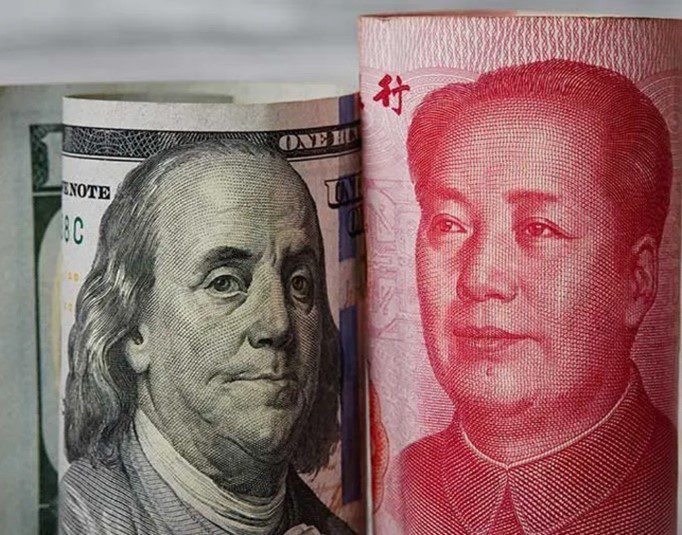Considering South China as a whole, the current general trend leans toward supporting and developing the high-tech industry and high-quality services, attracting more foreign investments and deepening economic and trade cooperation.
Take a look at our previous article: Business in South China – Part 1: Current Business Landscape
What measures has the government put in place to achieve its economic goals for South China? How are they affecting companies in the region? Find out in this article!
New Free Trade Zones (FTZ) in South China
In the last few years, China developed more and more FTZs all over the continent. The first one was the Shanghai Pilot FTZ in 2013. Fujian, Guangdong and Tianjin followed two years later in 2015. The third wave came in 2016, with new FTZs in Chongqing, Henan, Hubei, Liaoning, Shaanxi, Sichuan, and Zhejiang. Now, more recently, 7 other FTZs have been announced in China, 2 of which in South China.
Hainan’s New FTZ (2020) and Free Trade Port (2025)
In 2018, Xi Jinping announced that the whole island of Hainan was becoming a new Free Trade Zone, fully operational in 2020. Additionally, a Free Trade Port should be built in Hainan by 2025. The whole system should be ready by 2035. These initiatives have been taken due to Hainan’s strategic location next to ASEAN countries, and aim to further open up the economy. One special advantage Hainan will benefit from concerns the health sector. Establishing medical institutions, conducting medical activities and importing medical goods will be facilitated in Hainan’s FTZ through more flexible rules.
Guangxi included in the next generation of FTZs
On 26 August 2019, China announced the names of 6 new pilot FTZs: Shandong, Jiangsu, Guangxi, Hebei, Yunnan and Heilongjiang. Therefore, there will be one new FTZ in South China that is likely to attract more companies and boost the economy due to advantageous incentives, relaxed restrictions and fast administrative procedures.
If you are thinking about setting up a business or investing in Guangxi’s new FTZ – or any other FTZ -, we advise you to get in touch with a professional who will be able to give you all the information and tools you need.
The Further Development of The Greater Bay Area (GBA)
As explained in our article entitled Business in South China – Part 1: Current Business Landscape, the GBA refers to the economic center of South China, including the Guangdong province and the special administrative regions of Hong Kong and Macau. This area is being continuously developed and adopts new measures on a regular basis in order to boost local and international economic activities in the region.
IIT-exempted subsidies for foreign talents in the GBA (2019-2023)
On 14 March 2019, the Ministry of Finance and the State Administration of Taxes issued a notice on the Individual Income Tax preferential treatment of individuals in the Greater Bay Area. This introduced new subsidies for “foreign high-end talents & urgently needed talents” working in the GBA. These subsidies are exempt from PRC IIT and aim to eliminate the difference between mainland China IIT and Hong Kong IIT. They will for now stay in place until 31. December 2023. The eligibility and extend of the subsidy have further been detailed in June 2019 in the “Notice on the Implementation of Preferential IIT Policy for the Guangdong-Hong Kong-Macau Greater Bay Area”, jointly issued by the Department of Finance of Guangdong Province and the Guangdong Provincial Tax Authority.
Shenzhen-Zhongshan Corridor (2024)
Additionally, the Shenzhen-Zhongshan Corridor – an eight-lane highway – is expected to be ready in 2024. This will cut travel time by 30 minutes and contribute to a further increase of companies’ competitiveness and local and international integration.
Upgrading Dongguan
Transitioning towards high-tech manufacturing
Often called the “factory of the world”, Dongguan has for a long time been China’s leading manufacturing and export hub, offering low industrial land costs and one of the lowest labor costs. However, when these costs started to rise, more and more companies shifted their low-value manufacturing activities to other locations. Now, and especially since 2017, Dongguan has been transitioning towards high-tech and smart manufacturing, which is also supported by the Outline Development Plan for the Guangdong-Hong Kong-Macao Greater Bay Area. The government introduced a series of measures to help companies in Dongguan significantly reduce their costs and strengthen their capacity. Dongguan is also establishing industrial clusters and R&D centers in an effort to boost innovation and develop modern services.
Attracting Headquarters
In 2018, the city announced new incentives to attract headquarters, offering financial rewards, office space, land, and other advantages. Companies who relocate their headquarters to Dongguan will receive a one-time reward amounting to between RMB 2 million (US$279,660) and RMB 100 million (US$13,983 million). Companies who already have their headquarters in Dongguan could also benefit from a reward of maximum RMB 50 million. With these incentives, the city aims to attract 100 headquarters by 2025.
Shenzhen, China’s “Silicon Valley”
Becoming a Financial Innovation Hub
Since the establishment of the Qianhai-Shekou Area of China (Guangdong) Pilot Free Trade Zone in 2015, Shenzhen has developed into an international financial innovation hub, which was also supported by the city’s 13th Five-year Plan (2016-2020). It has recently been announced that Shenzhen will even serve as pilot zone for China’s new digital currency. This illustrates Shenzhen’s leading position in the trialing of financial innovations.
Furthermore, the city is boosting its interconnectivity and cooperation with neighboring regions. In 2017 for example, Shenzhen and Hong Kong developed the Lok Mau Chau Loop Technology Park (a special economic zone). This enables companies from Hong Kong to benefit from Shenzhen’s innovation system and creates new synergies for both cities.
Adopting Preferential policies
In order to attract more companies and to ease business activities in the region, Shenzhen also announced new preferential policies in 2018, including:
- Policies to support the competitiveness of companies,
- Policies to promote innovative projects and R&D
- Subsidies for headquarters, office purchases, and much more.
For more details on these policies, feel free to visit the website of the Shenzhen Government about Investment Policies.
Innovations in Transportation
In terms of transportation, Shenzhen is also taking the lead. According to the Shenzhen government in August 2019, the Guangzhou-Shenzhen-Hong Kong Express Rail Link will be the first high-speed rail in China having 5G service. By supporting the development and use of 5G, the city hopes to stimulate a variety of sectors and activities.
Foshan’s Shift to the Service Sector
Originally, Foshan’s economy was led by its strong manufacturing activities. But especially since 2015 with the “Made in China 2025” plan, the city increased its support to the tertiary industry, investing more and more into the financial sector in order to become a “Financial Silicon Valley”. As early as 2009, Foshan also published its Catalogue of Encouraged Foreign Investment Industries.
Guangzhou: New Manufacturing Measures
In June 2019, the local government published 59 new measures to support the manufacturing sector in Guangzhou. These measures were designed to reduce taxes, social security contributions and other costs borne by companies. They also limit the processing time for company registration to only 4 working days.
Conclusion
Most provinces and municipalities in South China are currently following the same trend towards opening-up and upgrading their economies. They continue to build more efficient infrastructures, to enhance economic cooperation and to develop new preferential policies.
Do you need help with your business in South China? Get in touch with our team for a consultation and follow us on social media to receive the latest news.
Our experienced team has the necessary expertise and the know-how to support you with your business – have a look at the services we offer.
Also, don’t forget to follow us on social media to receive all the latest updates!
See how much salary you receive after tax and check your company value without leaving WeChat!
Also, our Mini Program can estimate the salary in your industry, for your experience level and position. A huge help for salary negotiations!







